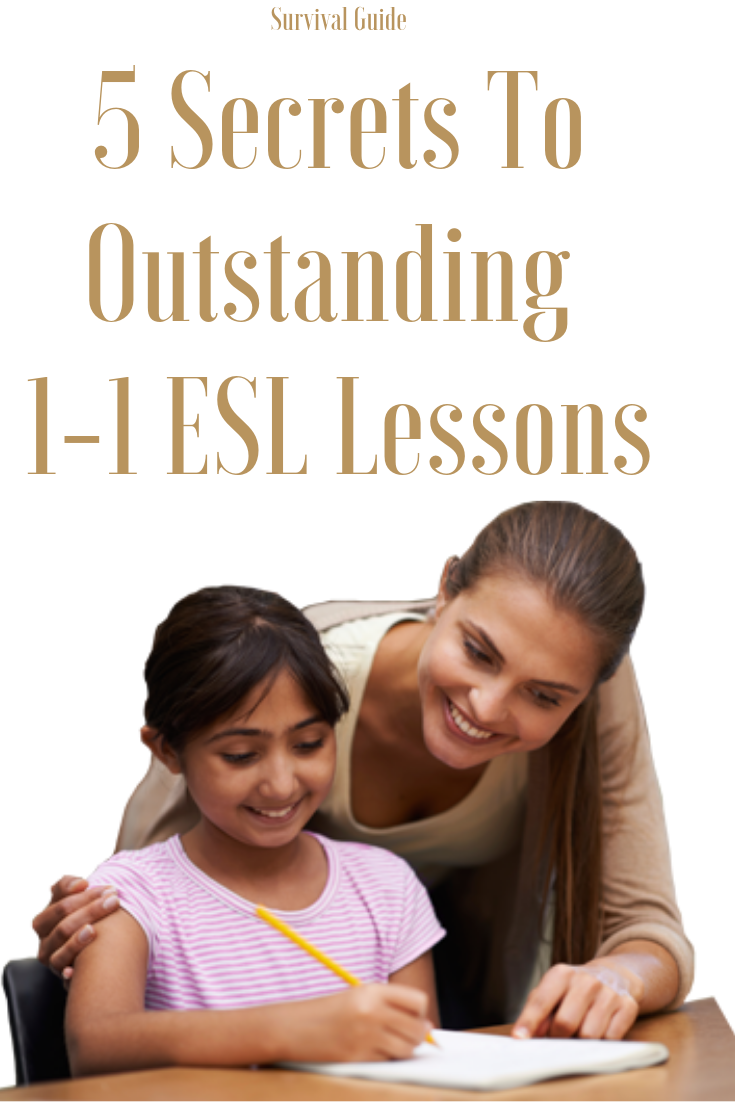Survival Guide: 5 Secrets To Outstanding 1-1 ESL Lessons
One to one lessons have, by far, been my most challenging ESL classes to date. It might sound easy having only one student, but that’s what makes it so tough. 1-1 tutoring is a delicate dance between the sage on the stage and the guide on the side. In other words, you talk more than you normally would in an ESL lesson, but you also have to give the student opportunities and encouragement to practice with you. The dynamic between the teacher and the student makes this kind of lesson difficult to navigate because the student will likely feel insecure about practicing with an expert. Imagine taking dance lessons from J-Lo. No matter how encouraging she was, you’d still be afraid. To remove the terror of feeling stupid or saying the wrong thing, here are some tips you can take to avoid the J-Lo effect.
Be vulnerable
One of the best ways to disarm a shy or nervous student is to be vulnerable to him or her. In this situation, vulnerability means to show that you understand how difficult it is to learn another language. One way I did this with my one to one students was to ask them to teach me their language. Take a little time before or after class. I like to tie what’s in the lesson with what I might ask the student to teach me, so I usually wait until after class. For instance, if I’m teaching the student how to compose a formal email I might ask him or her what words they use in their language for salutations. I’ll even write it down and try to remember it for the next lesson. These actions show them you’re just as curious about their language and it lets them open up to you and relax a little. We all enjoy when someone takes a genuine interest in our language and culture, which is why this works so well.
Go heavy on the guided practice
In a classroom setting, students normally get the chance to practice with their classmates and make mistakes before the teacher notices. In one to one lessons, that’s not an option. To help ease the pressure of perfection, you should give your students plenty of opportunities to practice the right way to do something before they’re asked to produce something on their own. This is particularly important when you’re teaching grammar. It’s good to set out a curriculum before beginning any new class, especially 1-1, so there’s a routine the student can get comfortable with.
Differentiate your content
Differentiating your content in one to one lessons is crucial if you want to excel in this kind of teaching. One to one lessons are prone to monotony because you are always the only two talking. Try to liven things up with different kinds of content. Audio, video, text, hands-on, debates and speeches can all be used in one to one lessons. Let me tell you a little secret: one of the best ways to differentiate your content is by adding a game to the mix. The students LOVE this. I like to bring in something easy like connect four. You tell your students you’re going to play the game while you talk about whatever subject you’re covering. This is their “test.” To see if they can carry on a conversation with you while also trying to win the game. Believe me, this will be a hit in any of your one to one lessons.
Change your setting
Much like the need to differentiate your content, you need to differentiate your setting from time to time. When you can, have the student explore the world around them. In fact, it’s so much better to do this in one to one classes than with loads of students. Take them outdoors, or if you teach in their home, go to a different room in the house. If you normally tutor in the kitchen, do something in the living room. You don’t have to make a dramatic shift, just one noticeable enough to pique the student’s interest. But make sure your change of setting is for a reason other than just to change the setting.
Be informal
A big mistake I made as a one to one teacher was feeling like I needed to be super formal and teachery in order for the student to think he or she was getting value from the class. Actually, one to one lessons are, by design, informal. It’s actually really weird to be stuffy and stiff. It’s important to keep in mind that you’re the only person who interacts with the student so why not make it resemble real life rather than a classroom? The student will get more out of your lessons if they are set up in ways that seem more useful and accessible to him or her. No one is saying you need to pull out the urban dictionary and pretend to be someone you’re not. Instead, try unbuttoning your collar, sitting next to your student and having a laugh.
What are some techniques you use in 1-1 ESL lessons that have proven successful? Comment below.
Don’t forget to share this article with your friends!


